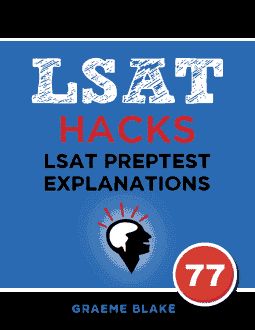This is an explanation for passage 4 of LSAT preptest 77, the December 2015 LSAT. This passage discusses Edward J. Steele Lamarckian theory that organisms can pass on mutations acquired in the immune system.
This section has paragraph summaries and an analysis of the passage, links to the explanations for the questions are below.
Paragraph Summaries
- Lamarckism is the idea that organisms pass on changes acquired during their lifetime to their offspring. (For example, if you study piano, then your child will be genetically better at the piano).
Long ridiculed, this idea is being revived by Edward J. Steele, who claims to have found a Lamarckian mechanism in the immune system. - There’s a lot we don’t understand about the immune system. How does it get information and respond quickly? Is the process genetic?
Some immune system cells have genes that mutate frequently. This lets them test different defenses. The mutation is written from DNA into RNA. - Steele thinks that immune system RNA can write mutations back into DNA. Steele also thinks that the DNA changes could be passed on to offspring, with the help of a virus.
- We can’t observe the changes directly. Steele thinks a pattern of observations suggest DNA mutations are passed on. Other biologists aren’t so sure.
Analysis
This is an unusually dense science passage. It uses big scientific words to disguise how simple the concepts are. Here’s all you need to know.
- Lamarckism: the idea that the stuff you do in your life can be genetically passed down to your offspring.
- DNA: Your genes. You pass these on to offspring.
- RNA: DNA gives information to RNA. You don’t pass on RNA. RNA is not DNA.
- Immune system: Mutates DNA, passes changes to RNA. These may go back to DNA.
- Why does the immune system mutate: The immune system has to fight new threats. So it has information that broadly works, but then it introduces small “typos” that let it test new defenses. If a defense works, it’s mass produced.
- Can these DNA changes be passed on? Steele says yes, via a virus, and indirect observation. Other scientists say no, saying there are simpler explanations for the observations.
I’m not a biologist. I couldn’t tell you much of anything about RNA. I could have once, in high school, but I forgot all that.
So how did I get the information above? I read the bloody passage. And when I was confused about what a word meant, I slowed down, read the context, and read the definition the passage gave for the word.
If you know the bulleted points above, you can answer every question. This is a hard topic, but it’s not necessarily a hard passage.
You should also understand Steele’s proposed process. Here it is:
DNA mutation ➞ gets written to RNA ➞ RNA writes mutation back to DNA (i.e. “reverse transcription”) ➞ virus takes DNA from immune cell to reproductive cells
Lines 31-33 make clear that reverse transcription is possible. The question is whether the final step is possible. Paragraph 4 is entirely about evaluating whether that’s possible.
Note that the third step, RNA to DNA, refers to RNA making changes in the organism’s own DNA. This immune system DNA is different from reproductive DNA. In order for the organism to pass on the changes, it must transfer the mutations from the immune cells’ DNA to reproductive cells’ DNA.

Want a free Reading Comp lesson?
Get a free sample of the Reading Comprehension Mastery Seminar. Learn tips for solving RC questions


Leave a Reply